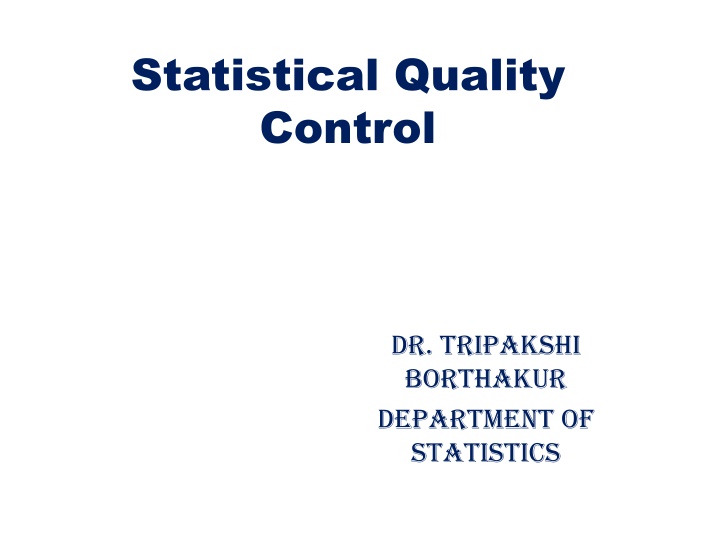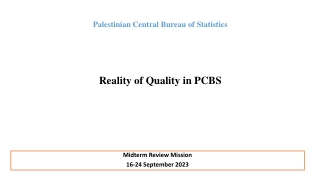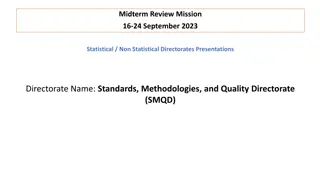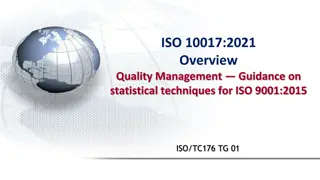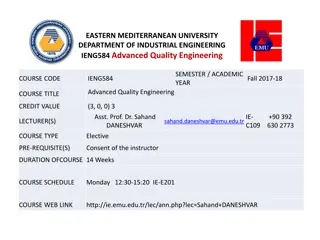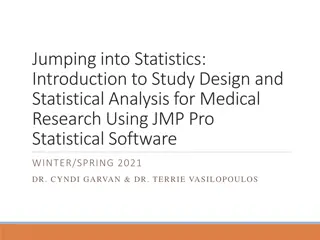Statistical Quality Control
Statistical Quality Control (SQC) plays a vital role in measuring and improving the quality of products in various industries. By separating assignable causes from chance causes, SQC enables immediate remedial action to maintain quality standards. Chance causes involve random variations, while assignable causes are preventable and can be identified and eliminated throughout the production process.
Download Presentation

Please find below an Image/Link to download the presentation.
The content on the website is provided AS IS for your information and personal use only. It may not be sold, licensed, or shared on other websites without obtaining consent from the author.If you encounter any issues during the download, it is possible that the publisher has removed the file from their server.
You are allowed to download the files provided on this website for personal or commercial use, subject to the condition that they are used lawfully. All files are the property of their respective owners.
The content on the website is provided AS IS for your information and personal use only. It may not be sold, licensed, or shared on other websites without obtaining consent from the author.
E N D
Presentation Transcript
Statistical Quality Control Dr. Tripakshi Borthakur Department of Statistics
Introduction Statistical Quality Control (S.Q.C.) is one of the most important applications of the statistical techniques in industry. Quality means a level or standard which depends on four M's such as material, manpower, machines and management. Quality control is the engineering and management activity by which we measure the characteristics of the product, compare them with specification. Thus it is a powerful productivity technique for effective diagnosis of lack of quality in any of the materials, processes, machines or end product. Thus, SQC is extensively
used in almost all industries such as aircraft, automobiles, textile etc. where techniques are based on probability and sampling. The main purpose of SQC is to devise statistical techniques which would help us in separating the assignable causes from the chance causes, thus enabling us to take immediate remedial action whenever assignable causes are present. Causes of Variation in quality- Chance &Assignable Causes: The basis of SQC is the degree of variability in the size or the magnitude of a given characteristics of the product. The variation in SQC is mainly classified into two categories- chance causes &
assignable causes which are described below:- Chance Causes: Some stable pattern of variation or a constant cause system is inherent in any particular scheme of production and inspection. This pattern results from many minor causes that behave in a random manner The variation due to these causes is beyond the control of human hand and can't be prevented/ eliminated under any circumstances. Assignable Causes: The second type of variation is due to non random or the so-called assignable causes and is termed as preventable variation. These causes may creep in at any stage of
the process, right from the arrival of the raw materials to the final delivery of goods. Some of the important factors of anignable causes of variation are sub-standard/defective raw material, new techniques/operations, negligence of operators, faulty equipment etc. These can be identified and eliminated before it goes wrong.
Difference between Chance and Assignable causes Chance Causes of variation Assignable causes of variation Consist of many individual causes Consist of just a few individual causes Any one chance cause results in only a small amount of variation Any one assignable cause can result in a large amount of variation Chance variation cannot economically be eliminated from a process The presence of assignable variation can be detected, & action to eliminate the causes is usually economically justified Some variation are : Slight vibration of a machine. Lack of human perfection in reading instruments and setting controls. Voltage fluctuations and variation in temperatures. typical chance causes of Some typical assignable causes of variation are : Negligence of operators. Defective raw material. Faulty equipment. Improper handling of machines.
